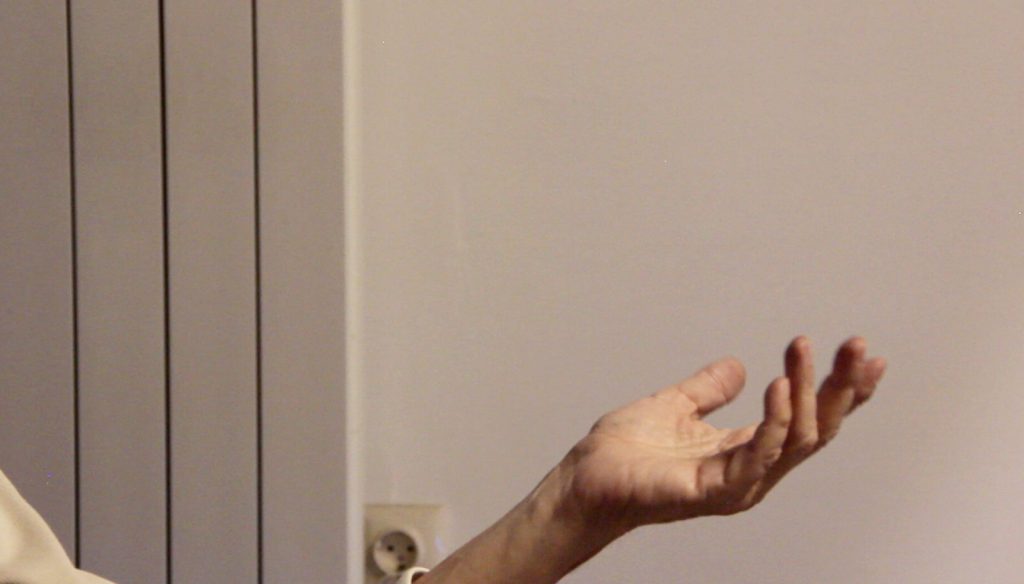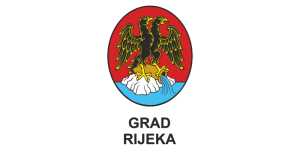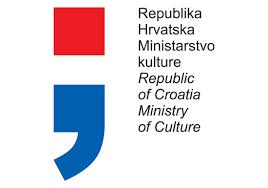Risk Change residency: Meet Vangjush Vellahu

MMSU presents artists on solo residency programme within EU project Risk Change. Solo residency programme took place from 6th of February until 18th of March 2020. In a first series of interviews meet visual artist, Vangjush Vellahu.
At the end of 2019, Museum of Modern and Contemporary Art Rijeka announced the open call for artists in residence as part of the Risk change project supported by the EU fond, Creative Europe. Artists from all over the world were invited to spend February and March in Rijeka and to develop artistic proposals in the form of a lecture, workshops or public intervention. The residency was the closing program of a 4-year project Risk Change. Its attempt was to identify and describe the mechanisms that support well-rooted contemporary stereotypes and existent colonialist heritage. Vangjush Vellahu, an Albanian born and Berlin-based visual artist working with video, prints, objects and archives, was one of the selected residents.
Vangjush grows a particular interest in exploring the production of collective memories within authoritarian regimes, with all the associating effects for their societies and communities, especially the communities on the margins of recognition. His travels often take shape of journal-like reconfigurations that attempt at re-defining the popular understanding of what borders, territories or geographies represent today. Audience in Rijeka had the opportunity to become familiar with this aspect of his work during 2019 group exhibition “We’re Not Like Them” where Vangjush exhibited a multichannel video installation Fragments I 2015-2018 (Where Stories Cut Across the Land) – a series of videos drawing attention to the contrasts of life in several partially recognized states (the Republic of Abkhazia, Turkish Republic of Northern Cyprus, Kosovo, South Ossetia, the Republic of Nagorno-Karabakh and Transnistria).
His proposal for the Risk Change residency had a starting point in his earlier work Home Conversations that investigated and identified the mechanism of work in one of the shut post-Soviet Armenian factories. He used interviews and family archives of the ex-employees to describe how, by organizing the life in and around the factory, the USSR created and maintained the social life of the entire city, including its subcultural branches. He also provided an insight into the social construction of the industrial workforce both during the Soviet time when the factory functioned as a city generator, and later during the 90s when it struggled to survive the post-earthquake breakdown of industrial society.
Vangjush intended to use the same approach in Rijeka, a post-industrial city filled with devastated industry remains. In this case, he also wanted to focus on the period before and after the ’90s, to underline the marginalization of some (class-to-work-related) communities by drastic political system change and the introduction of new forms of colonialism. He planned to undertake a dialogue between the post-USSR and post-Yugoslavian experiences, with the special attention given to leisure-time organization within the industry itself.
“When I came to Rijeka, I noticed a great amount of industrial heritage, remnants of a dead industry, that tried to be revived by other means such as the cultural industry”; says Vangjush. We are having a conversation via WhatsApp – he’s back in Berlin now, after spending a few additional weeks in Rijeka due to the coronavirus pandemic.
3. Maj shipyard is one of the common spots of fascination for every industry-of-socialism enthusiast visiting Rijeka. Vangjush was no exception. But the artist’s attention didn’t finish on the shipyard whose glorious history is now crouching in gargantuan equipment and space. It was drawn on a special form of leisure time that the shipyard nurtured in socialism – Kino Photo Club Jadran.
“It took me a while to understand the story behind the Kino Photo Club of 3. Maj. Soon I was told that the person to speak to was Petar Trinajstić, who ran the club in the 80s and 90s”, says Vangjush. Trinajstić is a well-known photographer, cinematographer, and author of a series of award-winning amateur and experimental documentaries, born in Vrbnik on the island of Krk in 1946. At the time, he was employed in the so-called Personnel Education Center at 3. Maj. Vangjush certainly wanted to get in touch with him.
“So we met. A couple of times. On the last occasion, I interviewed him with the help of Marina Tkalčić from MMSU. Transcription and translation was later done by Mara Klanjac and Dea Maržić. It was extremely interesting, both the interview and the interviewee himself.
We talked a lot about the working processes in 3. Maj and about the functioning of the Kino Photo Club. I am fascinated with the enthusiasm that was implanted into those formats, which only existed in socialism — capitalism had destroyed them entirely. I was also fascinated with this form of knowledge transfer and socializing of the workers. The club was teaching them how to make movies, but also screened movies and opened the opportunity to talk about them, not only between the workers themselves but also with some of the professional and renewed Yugoslavian directors. What was also fascinating is that marine engineers had an interest in and were actively involved in filmmaking.
Petar Trinajstić begins the interview with tthe following sentences: 3. Maj was a large shipyard in Croatia that hired over 7 thousand people in former Yugoslavia, which was self-governing socialism. On one hand, the religion was repressed, but spiritual values were challenged through artistic creation. For these reasons, I believe that the factories were not just a place of production but also a place for education.
I find this very interesting. Trinajstić also talks a lot about enabling the workers to use modern tools such as – at the time very modern and innovative – cameras. Trinajstić himself was very impressed with the technology and development of the time.
One of his films that inspired me and made me want to get to know him was “How the Ship was Build“. How good the movie is, justifies the fact that it was produced by one of the biggest Yugoslav production companies at the time, Jadran film. I find Trinajstić fascinating because he can speak very broadly, about various topics. I got the impression that he is a nice, humble and patient man”, says Vangjush.
He would like to return to Rijeka and do a series of interviews with Trinajstić, or to exhibit his and the video works of others from the Kino Photo Club Jadran.
“It is true, I diverted my interest from the Rijeka industry to a specific man. I also gave up on the idea of making a video, which was my first intention. This corona crisis gave me to think that it might not be necessary to produce something completely new, but to be able to use what already exists – Petar’s body of works. I’m thinking now, I’d rather apply a new form on the already existing film production from 3. Maj, and focus on writing and archive building on 3. Maj Kino Club, in the sense of brining it in a new and actual local context of Rijeka. It is still unclear to me what the outcome will be, but what is clear is that I want to continue with interviewing Petar and with finding as much of the archive from 3. Maj as possible”, said Vangjush.
Conversation was conducted by: Jelena Androić
Organized by: MMSU Rijeka
Programme co-funded by: Creative Europe Programme of the European Union, Rijeka 2020.eu, City of Rijeka, Ministry of Culture of Republic of Croatia
“The European Commission support for the production of this programme does not constitute an endorsement of the contents which reflects the views only of the authors, and the Commission cannot be held responsible for any use which may be made of the information contained therein.”

![]()
![]()

